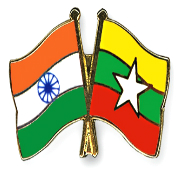Free Movement Regime
The India-Myanmar border spans an extensive 1,643 kilometers and is a critical area for cross-border relations and movements. In 2018, as part of the Act East policy by the Narendra Modi government, the Free Movement Regime (FMR) was established to facilitate migration without a visa for tribes residing along the Indo-Myanmar Border (IMB). While the FMR was designed to strengthen ties and promote trade, it has also posed challenges in terms of illegal immigration, insurgent activities, and drug trafficking.
Fostering Cross-Border Movement
The primary purpose of the FMR is to encourage people-to-people contact and enable tribes living along the India-Myanmar border to travel up to 16 kilometers inside each other’s territories without a visa. This arrangement aimed to address historical border demarcation issues that divided people of the same ethnicity and culture without their consent.
Challenges of Illegal Immigration
While the FMR aimed to foster harmonious relations, it inadvertently gave rise to concerns over illegal immigration. The Manipur government identified 2,187 illegal migrants, raising questions about security and potential ethnic tensions.
Insurgent Activities and Drug Trafficking
The unfenced and porous nature of the India-Myanmar border has also posed security challenges. Insurgent groups such as UNLF, PLA, ULFA, NSCN, Kukis, and Zomis have reportedly established camps in Myanmar. These groups engage in drug trafficking and weapon sales, exploiting the porous border and frequent misuse of the FMR.
Suspension of the FMR
As the situation escalated in Myanmar due to the military coup in February 2021, India temporarily suspended the FMR in September 2022. The suspension was aimed at addressing the challenges posed by illegal immigration and drug trafficking along the border.
Balancing the Approach
While the suspension of the FMR addressed some immediate concerns, completely removing the regime or fully fencing the border could have adverse consequences. Such actions could impact local livelihoods and essential cross-border travel for healthcare and education. Experts suggest adopting a “killing the snake without breaking the stick” approach, which involves better regulation and administration of the border areas.
Month: Current Affairs - July, 2023
Category: International / World Current Affairs


